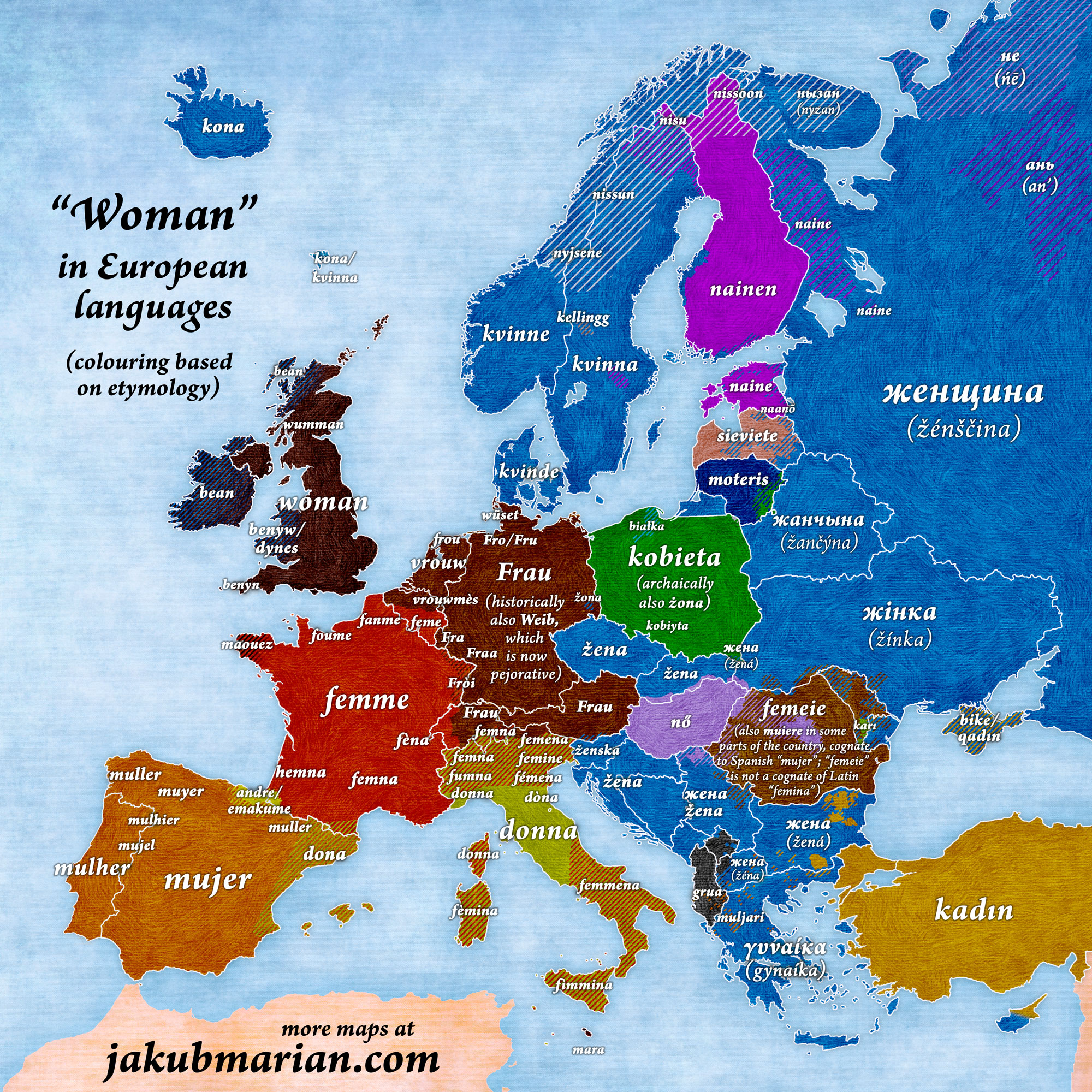The map below shows how to say “woman” in European languages. The colouring is based on etymology, not on language families (in other words, if several languages share one colour, the translations shown on the map are derived from the same root in all these languages).
Amazingly, Slavic žena (and similar), Greek gynaíka, Germanic kvinna (and similar) and Celtic bean (and similar) all come from the same Proto-Indo-European root *gʷḗn (also related to English “queen”, for instance). An earlier version of the map did not show this connection, but they all share the same colour on the map below (as they should):

Romanian femeie is derived from Latin familia, not femina, so it is not a cognate of French femme. Polish kobieta used to be derogatory, but it is now the neutral standard word. North Frisian wüset (or wüv in some dialects) is related to English “wife”, which itself is a cognate of “woman”. Hungarian nő is a cognate of Nenets ńē, but not a cognate of Finnish nainen.
 Tip: Are you a non-native English speaker? I have just finished creating a
Tip: Are you a non-native English speaker? I have just finished creating a  Web App
Web App
